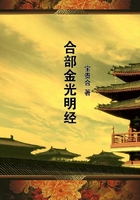1
Soissons and Arras when I visited them were samples of the deadlock war; they were like Bloch come true.The living fact about war so far is that Bloch has not come true--/yet./ Ithink in the end he will come true, but not so far as this war is concerned, and to make that clear it is necessary to trouble the reader with a little disquisition upon war--omitting as far as humanly possible all mention of Napoleon's campaigns.
The development of war has depended largely upon two factors.
One of these is invention.New weapons and new methods have become available, and have modified tactics, strategy, the relative advantage of offensive and defensive.The other chief factor in the evolution of the war has been social organisation.
As Machiavelli points out in his /Art of War/, there was insufficient social stability in Europe to keep a properly trained and disciplined infantry in the field from the passing of the Roman legions to the appearance of the Swiss footmen.he makes it very clear that he considers the fighting of the Middle Ages, though frequent and bloody, to be a confused, mobbing sort of affair, and politically and technically unsatisfactory.The knight was an egotist in armour.Machiavelli does small justice to the English bowmen.It is interesting to note that Switzerland, that present island of peace, was regarded by him as the mother of modern war.Swiss aggression was the curse of the Milanese.That is a remark by the way; our interest here is to note that modern war emerges upon history as the sixteenth century unfolds, as an affair in which the essential factor is the drilled and trained infantryman.The artillery is developing as a means of breaking the infantry; cavalry for charging them when broken, for pursuit and scouting.To this day this triple division of forces dominates soldiers' minds.The mechanical development of warfare has consisted largely in the development of facilities for enabling or hindering the infantry to get to close quarters.As that has been made easy or difficult the offensive or the defensive has predominated.
A history of military method for the last few centuries would be a record of successive alternate steps in which offensive and defensive contrivances pull ahead, first one and then the other.
Their relative fluctuations are marked by the varying length of campaigns.From the very outset we have the ditch and the wall;the fortified place upon a pass or main road, as a check to the advance.Artillery improves, then fortification improves.The defensive holds its own for a long period, wars are mainly siege wars, and for a century before the advent of Napoleon there are no big successful sweeping invasions, no marches upon the enemy capital and so on.There were wars of reduction, wars of annoyance.Napoleon developed the offensive by seizing upon the enthusiastic infantry of the republic, improving transport and mobile artillery, using road-making as an aggressive method.In spite of the successful experiment of Torres Vedras and the warning of Plevna the offensive remained dominant throughout the nineteenth century.
But three things were working quietly towards the rehabilitation of the defensive; firstly the increased range, accuracy and rapidity of rifle fire, with which we may include the development of the machine gun; secondly the increasing use of the spade, and thirdly the invention of barbed wire.By the end of the century these things had come so far into military theory as to produce the great essay of Bloch, and to surprise the British military people, who are not accustomed to read books or talk shop, in the Boer war.In the thinly populated war region of South Africa the difficulties of forcing entrenched positions were largely met by outflanking, the Boers had only a limited amount of barbed wire and could be held down in their trenches by shrapnel, and even at the beginning of the present war there can be little doubt that we and our Allies were still largely unprepared for the full possibilities of trench warfare, we attempted a war of manoeuvres, war at about the grade to which war had been brought in 1898, and it was the Germans who first brought the war up to date by entrenching upon the Aisne.We had, of course, a few aeroplanes at that time, but they were used chiefly as a sort of accessory cavalry for scouting; our artillery was light and our shell almost wholly shrapnel.
Now the grades of warfare that have been developed since the present war began, may be regarded as a series of elaborations and counter elaborations of the problem which begins as a line of trenches behind wire, containing infantry with rifles and machine guns.Against this an infantry attack with bayonet, after shrapnel fails.This we will call Grade A.To this the offensive replies with improved artillery, and particularly with high explosive shell instead of shrapnel.By this the wire is blown away, the trench wrecked and the defender held down as the attack charges up.This is Grade B.But now appear the dug-out elaborating the trench and the defensive battery behind the trench.The defenders, under the preliminary bombardment, get into the dug-outs with their rifles and machine guns, and emerge as fresh as paint as the attack comes up.Obviously there is much scope for invention and contrivance in the dug-out as the reservoir of counter attacks.Its possibilities have been very ably exploited by the Germans.Also the defensive batteries behind, which have of course the exact range of the captured trench, concentrate on it and destroy the attack at the moment of victory.The trench falls back to its former holders under this fire and a counter attack.Check again for the offensive.Even if it can take, it cannot hold a position under these conditions.















